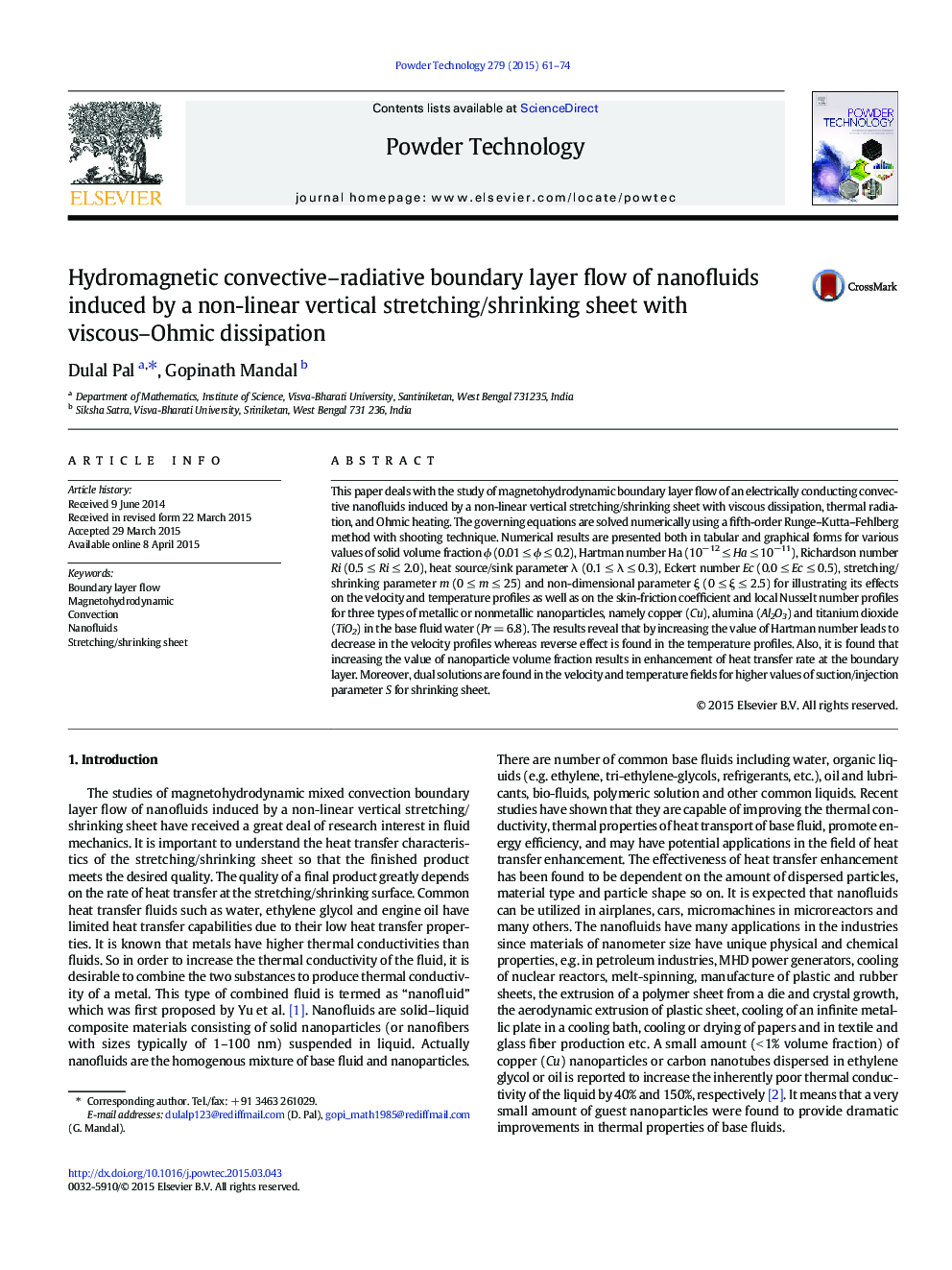| Article ID | Journal | Published Year | Pages | File Type |
|---|---|---|---|---|
| 235561 | Powder Technology | 2015 | 14 Pages |
•Velocity and temperature profiles both decrease with the increase in m for stretching sheet.•Velocity profiles increase but temperature profiles decreases for stretching sheet with Ri for Cu–water nanofluid.•Velocity and temperature both profiles increase with the increase in Ec for stretching sheet.•Skin-friction coefficients increase for shrinking sheet with ξ for all the three types of nanofluids.•For higher values of S there exist dual solution branches for Cu–water.
This paper deals with the study of magnetohydrodynamic boundary layer flow of an electrically conducting convective nanofluids induced by a non-linear vertical stretching/shrinking sheet with viscous dissipation, thermal radiation, and Ohmic heating. The governing equations are solved numerically using a fifth-order Runge–Kutta–Fehlberg method with shooting technique. Numerical results are presented both in tabular and graphical forms for various values of solid volume fraction ϕ (0.01 ≤ ϕ ≤ 0.2), Hartman number Ha (10− 12 ≤ Ha ≤ 10− 11), Richardson number Ri (0.5 ≤ Ri ≤ 2.0), heat source/sink parameter λ (0.1 ≤ λ ≤ 0.3), Eckert number Ec (0.0 ≤ Ec ≤ 0.5), stretching/shrinking parameter m (0 ≤ m ≤ 25) and non-dimensional parameter ξ (0 ≤ ξ ≤ 2.5) for illustrating its effects on the velocity and temperature profiles as well as on the skin-friction coefficient and local Nusselt number profiles for three types of metallic or nonmetallic nanoparticles, namely copper (Cu), alumina (Al2O3) and titanium dioxide (TiO2) in the base fluid water (Pr = 6.8). The results reveal that by increasing the value of Hartman number leads to decrease in the velocity profiles whereas reverse effect is found in the temperature profiles. Also, it is found that increasing the value of nanoparticle volume fraction results in enhancement of heat transfer rate at the boundary layer. Moreover, dual solutions are found in the velocity and temperature fields for higher values of suction/injection parameter S for shrinking sheet.
Graphical abstractFigure optionsDownload full-size imageDownload as PowerPoint slide
